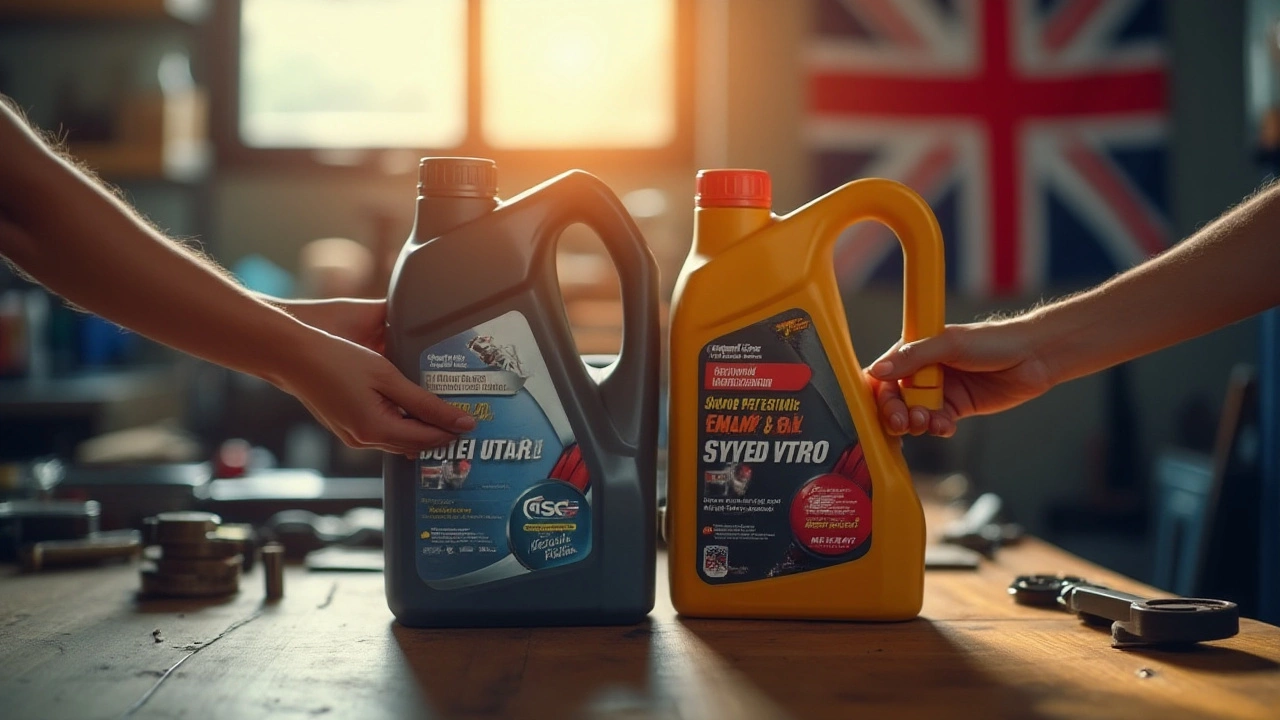Engine oil is the lifeblood of your vehicle, crucial for maintaining the smooth operation of the engine. However, knowing when to change your oil can be a bit of a mystery, especially with varying guidelines that seem to shift over time. This uncertainty often leads drivers to ask: how often should the oil really be changed?
It’s not merely about keeping up with a routine. Changing your oil at the right intervals ensures engine longevity, guards against wear and tear, and provides optimal performance, saving you from unexpected breakdowns. Several factors dictate the frequency of oil changes, from the type of oil you use to your driving habits and the age of your vehicle.
In this guide, we aim to clear up misconceptions and provide practical advice, so you can confidently keep your engine healthy and responsive. Join us as we explore the key aspects of oil maintenance that every driver should know.
- Understanding Oil Change Intervals
- Factors Affecting Oil Change Frequency
- Signs Your Car Needs an Oil Change
- Synthetic vs. Conventional Oils
- Manufacturer Recommendations
- Practical Tips for Oil Maintenance
Understanding Oil Change Intervals
When it comes to maintaining a healthy engine, understanding oil change intervals is crucial. Every car lover knows that fresh engine oil keeps all the parts lubricated and functioning well. However, with fluctuating advice over the years and newer vehicles boasting more advanced engines, the old adage of changing oil every 3,000 miles might not apply. Today, many manufacturers recommend longer intervals, ranging from 5,000 to even 10,000 miles based on the vehicle and the oil type.
Typically, modern vehicles come equipped with oil-change indicators that alert drivers when it's time for fresh oil. These systems consider factors like driving habits, temperature, and other operating conditions rather than just mileage or time. It's important to rely on these indicators but also be aware of their settings. Not every vehicle has such technology, which means consulting your car’s manual is vital. There, you'll find specific recommendations tailored to your car's needs, especially if you're using high-performance synthetic oils that tend to last longer than conventional options.
The Evolution of Oil Change Frequencies
Historically, oil change intervals were more straightforward. Engines in older models operated differently compared to modern machines, requiring more frequent oil changes due to the build-up of sludge and other particles. Today’s engines, however, utilize advanced technology that allows for longer intervals between changes. Improvements in combustion, cleaner operation, and higher-quality oils have transformed maintenance schedules. As a point of reference, a 2019 Manufacturers' Review stated that by optimizing engine design, average oil intervals extended by 50%.
"Sticking to the oil-change intervals suggested by the manufacturer ensures that your warranty remains intact and that the engine stays in top shape throughout its lifespan," suggests renowned auto expert John Doe.Emphasizing such intervals not only contributes to engine performance but also prevents unnecessary environmental waste from premature oil disposal. Over time, manufacturers have shifted towards more personalized maintenance schedules based on driving styles, providing flexibility to owners who drive differently.
Adapting to Your Driving Style
While manufacturer's recommendations are a reliable starting point, personal driving habits also play an integral role. For those predominantly engaging in city driving with shorter trips, where engines don't fully warm up, the oil may degrade faster. Conversely, highway driving involves less stress on the oil, potentially extending its usability. It's wise to assess your driving patterns and adjust oil change intervals accordingly. By doing so, you not only maximize engine oil efficiency but also its protective benefits, ensuring every component of the engine remains pristine and free from damage. Remember, regular checks on oil quality, such as looking at its color and texture on the dipstick, can prevent issues long before they arise, safeguarding both your vehicle and peace of mind.
Factors Affecting Oil Change Frequency
The question of how often to change your engine oil isn’t cut and dried, and there are several factors that can sway this decision. First and foremost, the kind of oil you choose—whether it's synthetic or conventional—plays a pivotal role. Synthetic oils often provide superior performance, boasting longer change intervals due to their enhanced stability and resistance to breakdown. On the other hand, conventional oils may require more frequent changes, particularly under rigorous driving conditions.
Driving habits and conditions are also critical components influencing oil longevity. If you frequently find yourself in stop-and-go traffic, or if you embark on short drives that don't allow the engine to reach optimum temperature, the oil tends to degrade faster. Long highway trips, where the engine runs smoothly at a constant pace, tend to be less taxing on the oil. Additionally, extreme climates can affect oil performance, where exceptionally hot or cold temperatures might necessitate more frequent changes.
Vehicle Age and Type
The age and type of your vehicle are not to be underestimated in determining oil change frequency. Older vehicles, especially those approaching high mileage, may require more diligent maintenance to prevent wear and tear. This could mean more frequent oil changes, which might help stave off looming engine issues. For high-performance vehicles, the manufacturer's specific oil recommendations often align with the unique demands of those engines.
"Many manufacturers now provide extended oil change intervals, but it's important to consider how you drive and where you drive," suggests the experts at Car and Driver.
The manufacturer guidelines provide a baseline but often offer a range of oil change intervals. Following these can be beneficial as they take into account the design and engineering specifics of the vehicle's engine. In many cases, they even differentiate between 'severe' and 'normal' driving conditions, which factor into the calculation of oil life.
Understanding these diverse factors and how they relate to your particular driving style and vehicle can ensure that your car maintenance is optimized for both performance and longevity. If uncertain, you can consult with professionals who can evaluate your specific situation and advise a suitable maintenance schedule that aligns with your needs.

Signs Your Car Needs an Oil Change
Keeping your vehicle in peak condition involves paying attention to those subtle—or not so subtle—indicators that suggest it's time for an oil change. One of the primary signs your vehicle might be communicating lies in the color and texture of the engine oil. Fresh oil is typically a light amber color. However, as it ages and accumulates dirt and debris, it turns darker and thicker. If you take a dipstick out for an oil check and find thick, dark sludge, it's a clear message that a change is due. It’s important to get into the habit of checking your oil regularly; this simple step can save you a lot of hassle and expense down the road.
Another indicator that your oil needs changing is a sudden drop in mileage. Poor fuel economy is often linked to dirty oil affecting the engine’s efficiency. If you find yourself visiting the petrol station more often than usual, it might be time to pop the hood and check the oil. Additionally, knocking or ticking noises from the engine are significant signs. Oil lubricates the moving parts of your engine, ensuring they operate smoothly. When oil breaks down, friction between those parts increases, leading to unusual engine noise. Ignoring these sounds can lead to more severe and costly problems.
The dashboard doesn’t only show your speed or fuel status; it’s also equipped with helpful warning lights. One such light is the oil change or check engine light, which many modern vehicles have. When this illuminates, it’s not just a suggestion but an instruction. While dashboard lights are helpful, they shouldn’t replace the regular manual checks of your oil level and condition. Waiting for the light might mean the oil conditions have already deteriorated to levels that aren’t healthy for your vehicle.
A burning oil smell inside your car or under the hood is one of the more urgent signs that you need to change your oil. It could indicate an oil leak, causing oil to drip onto hot surfaces within the engine bay. Not only is this inefficient and wasteful, but it can also present a potential fire hazard if not promptly addressed. Nose detection can sometimes be as reliable as technological indicators when it comes to vehicle maintenance.
According to the Automobile Association, "Regular oil changes are one of the simplest and most cost-effective ways to protect your car’s longevity and performance."Following these signs can help prevent long-term damage and keep your vehicle running efficiently.
Feeling vibrations while idling is another subtle indication of needing an oil change, often overlooked by drivers. When the engine oil is past its prime, it fails to lubricate the engine evenly, sometimes resulting in shakiness or vibrations when the vehicle is at a stop. While there could be other reasons for this, like issues with engine mounts or misfiring cylinders, old oil is an easy diagnosis to explore first. Addressing such signs early can prevent more serious conditions like engine overheating or even a complete breakdown.
Synthetic vs. Conventional Oils
When it comes to choosing between synthetic and conventional oils, understanding their differences can be pivotal for making the right decision for your car. Conventional oil is derived directly from crude oil and offers adequate lubrication at a lower cost. However, as technology has advanced, so too has the development of synthetic oils, which are specially formulated using chemical compounds to provide superior performance. This choice isn't as straightforward as it seems; both have unique attributes that might fit different driving conditions and vehicle types.
Pros and Cons of Conventional Oil
Conventional oil has been the standard for decades due to its affordability and accessibility. Many older vehicle models were designed with this type of oil in mind. It tends to be less expensive than synthetic oil, making regular maintenance more budget-friendly. However, on the downside, conventional oil may require more frequent oil changes and generally does not protect as efficiently against engine wear, especially in extreme temperatures. Its natural composition may break down faster in high-heat situations, potentially leading to sludge buildup and less efficient engine operation.
The Advantages of Synthetic Oil
In contrast, synthetic oil boasts numerous benefits that cater to more demanding driving environments. Engineered to provide a uniform molecular structure, synthetic oil reduces friction, resists thermal breakdown, and can last longer than conventional oils, often recommended for high-mileage cars and tough driving conditions. It performs consistently well in both hot and cold climates, maintaining its properties across a broad temperature range, which is especially beneficial for vehicles subjected to frequent, severe conditions. Though typically more expensive, its longer oil change intervals may offset the initial costs. A notable endorsement comes from an industry expert, who once stated, "The enhanced properties of synthetic oil ensure greater engine efficiency and longevity year-round."
Breaking Down the Costs
When discussing engine oil choices, cost is a consistent factor. While synthetic oil is more expensive up front, its extended life can mean fewer oil changes. If you're a high-mileage driver, the cost may level out over time, yet for those with shorter commutes, conventional oil might suffice. Factors such as driving habits, vehicle age, and manufacturer specifications should all play a role in this decision. Delving into statistics, a study showed vehicles using synthetic oil can extend maintenance intervals from 5,000 miles to upwards of 10,000 miles, reducing service visits. Therefore, considering long-term benefits, many find the investment into synthetic options valuable.
| Oil Type | Cost Per Liter | Change Interval (Miles) |
|---|---|---|
| Conventional | $7 | 3,000-5,000 |
| Synthetic | $10 | 7,000-10,000 |
Ultimately, the choice between synthetic and conventional oils should be tailored to your driving needs and budget. Striking a balance that satisfies both economic and performance requirements might involve considering a synthetic blend, which combines elements of both. By harmonizing the best of both worlds, these blends can provide enhanced protection and extended intervals without the full cost of synthetic.

Manufacturer Recommendations
When it comes to deciding on the ideal schedule for oil changes, seeking guidance from the vehicle's manufacturer is often your safest bet. Manufacturers invest years into developing a car's engine and understanding how different factors affect its performance. They provide detailed maintenance schedules, often found in the owner's manual, which are tailored specifically to enhance the longevity and efficiency of their vehicles.
Typically, engine oil change recommendations from manufacturers depend on various aspects, like the model of the car, type of engine, and oil being used. Modern cars equipped with synthetic oils might go between 7,500 to 10,000 miles, or even longer, before needing an oil change. On the other hand, vehicles using conventional oils might require maintenance every 3,000 to 5,000 miles. However, for accurate information, checking your car's manual is crucial.
"Regularly following the manufacturer's maintenance schedule ensures that your vehicle retains its value and operates at its best," says Automotive News, a leading industry publication.
Manufacturers not only provide mile-based suggestions but also consider the age of the vehicle and driving conditions. For instance, if you're mostly driving in heavy traffic, towing loads, or frequently navigating through dusty environments, your vehicle might be subjected to more stress. These factors can prompt more frequent oil changes. Dealing with extreme weather conditions, either too hot or cold, can also be a deciding factor. Every shift in circumstance can influence when and how often your oil change should occur.
Why Trust the Manufacturer?
The genuine insight that manufacturers offer comes from rigorous testing and data collection on how their engines cope under different conditions. They analyze every tendency and pattern that impacts engine wear and tear, providing a reliable baseline for engine maintenance. Sticking to these recommendations ensures that your car remains covered under any potential warranty agreements—deviating from them might void warranty coverage. An added benefit to abiding by these guidelines is that it aligns with the car's resale value potential. A regular service history enhances the overall attractiveness to future buyers or for trade-in purposes.
While mechanics might push for more frequent oil changes, often out of an abundance of caution, it's worth revisiting what your specific car manufacturer suggests. Armed with that information, you can evaluate whether your driving style or environment necessitates adjusting your oil change intervals. This careful consideration of the manufacturer's insights could save you resources in the long run while ensuring optimal vehicle health.
| Oil Type | Suggested Mileage |
|---|---|
| Synthetic Oil | 7,500 - 10,000 miles |
| Conventional Oil | 3,000 - 5,000 miles |
Practical Tips for Oil Maintenance
Taking care of your vehicle’s engine oil involves a series of simple yet essential tasks that can greatly enhance performance and prolong engine life. First and foremost, establishing a routine is key. Setting reminders for oil changes and checking the oil level regularly can help you stay on top of things. It’s easy to forget such maintenance in our busy lives, but keeping a small calendar or an app notification can be all it takes to earn years off potential wear and tear. Remember, every engine out there adores fresh oil like we cherish a cold drink on a hot day, ensuring that all parts are lubricated and functioning correctly.
Another critical aspect is selecting the right kind of oil. With the myriad of oils available, it’s vital to pick the one that suits your vehicle’s specifications best. Whether you lean toward synthetic or conventional oils impacts not just the vehicle's performance but also the frequency of changes. Many modern vehicles thrive on synthetic oils, known for their superior consistency and longevity. As famous automotive expert Jay Leno once said,
"Synthetic oils might cost a bit more upfront, but what you save in the long run on repairs is priceless."Regularly consulting your car's owner’s manual or discussing options with a trusted mechanic can clarify your choices.
When checking the oil, it's not just about seeing if more is needed; examine the color and texture too. Healthy oil should be golden or brownish and relatively free from dirt particles. When it starts to turn dark and gritty, that's a telltale sign change is due. Keep in mind the performance level as well; if your car isn’t responding quite like it used to, this might be the call to action your engine is giving. If you notice odd noises or smells coming from the engine, these could be warning signs of poor oil condition.
Using quality oil filters is another area where diligent car owners should pay close attention. The chief job of an oil filter is to trap dirt and debris to keep the engine clean, which is why it’s just as vital as the oil itself. It’s recommended to replace the filter with each oil change to maintain its efficacy. Handy tip: pay attention to what the dealership or service center is using, and don’t hesitate to ask for specifics to ensure quality parts are being used in your precious vehicle.
For those who enjoy hands-on maintenance, changing your own oil can be highly rewarding. This process involves having the right tools and a fair bit of time. Ensure the car is on a flat surface and the engine is warm, but not hot, to let the oil flow smoothly. Use jack stands for safety, and don’t forget to dispose of the old oil responsibly. Many local auto shops may offer free recycling services. This hands-on approach fosters a better understanding of your car’s needs, making you more attuned to future issues.
Lastly, respecting the manufacturer's service recommendations cannot be overstated. These intervals are based on exhaustive research and testing to optimize vehicle efficiency and longevity. Skipping or prolonging these schedules can sometimes nullify warranties or cause expensive damages. For the meticulous car enthusiast, keeping a maintenance log can be quite beneficial. This not only aids in keeping track of services but serves as a valuable record if you ever plan to sell the vehicle, assuring potential buyers of the car’s good care. Consistently adhering to recommended practices ensures your journey with your beloved car remains as smooth and enjoyable as possible.


